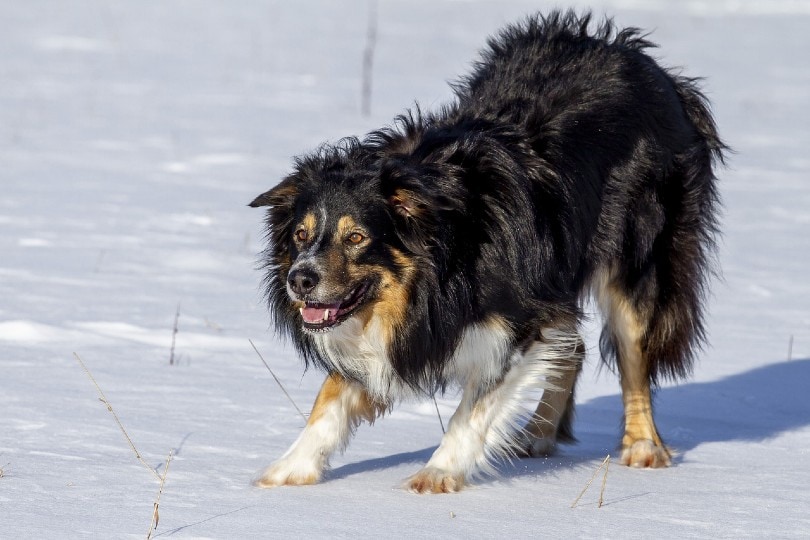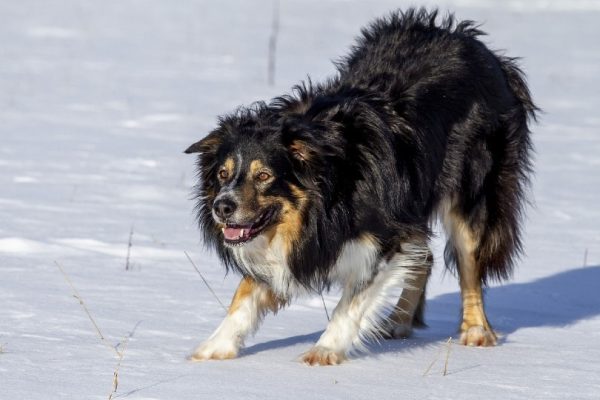Predatory aggression occurs when a dog “hunts” something. Typically, this involves them chasing after a cat or another smaller animal. This type of aggression is not driven by hormones and is instead largely genetic. Dogs were made to chase other animals in order to eat. It’s an innate instinct for them.
Despite being domestic, many modern dog breeds are still skilled hunters, especially the ones used as hunters. Some breeds have been bred to exhibit one piece of their predatory nature quite well. For instance, Labradors are good at retrieving prey, while Greyhounds are good at chasing. Even small terriers were originally made for hunting and killing small vermin. Some dogs may even be predatory towards other dogs, especially if the other dog is much smaller.
Unlike other forms of aggression, predatory aggression isn’t necessarily aggressive. The dog isn’t chasing the cat because they don’t like the cat. It is simply natural for them to chase things.
Why Do Some Dogs Exhibit Predatory Aggression?
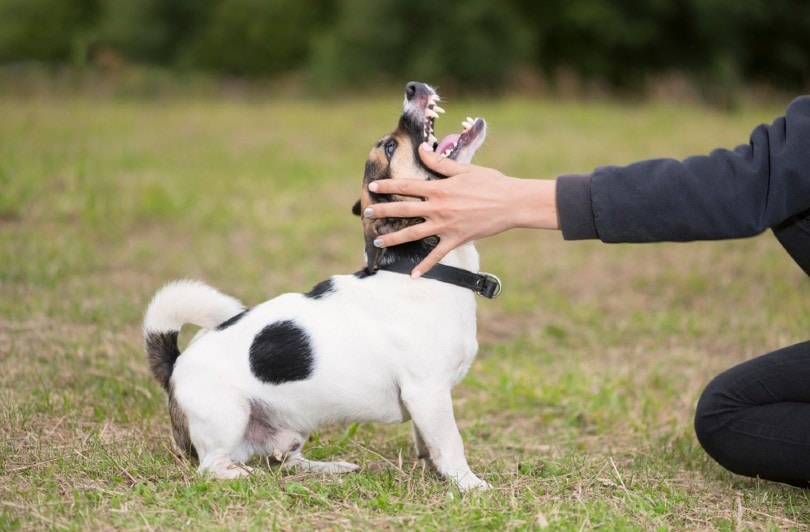
Not all dogs chase cats. In fact, some get along remarkably well with smaller animals. However, the majority of breeds out there have a significant prey drive. Most dogs with a high prey drive today have been modified through selective breeding, so they often hunt in a very specific way. At one point, all dogs had a strong prey drive. Otherwise, they wouldn’t be alive today.
High Prey Drive
Dogs with a high prey drive are likely to chase and even kill small animals. Dogs in the sporting, herding, hound, and terrier groups all exhibit significant hunting instincts. However, herding dogs may not actually kill small animals, though they will chase them. They have simply been bred to exhibit intense stalking skills, which is how they are able to herd so efficiently.
Terriers, in particular, are very good at catching and killing smaller animals. Most sporting dogs use their prey drive in some way, though not all of them are prone to killing animals. Labradors have a “soft mouth,” so they don’t tend to actually puncture animals. This is useful when you need the dog to retrieve a bird intact, but not so useful when the dog is going after a cat.
Many dogs that exhibit predatory aggression will not show any warning signs, which makes them quite dangerous. It often isn’t possible to remove the cat or other small animal from the area before the dog becomes aggressive. The dog will suddenly just become aggressive and chase the other pet.
Attraction to Movement
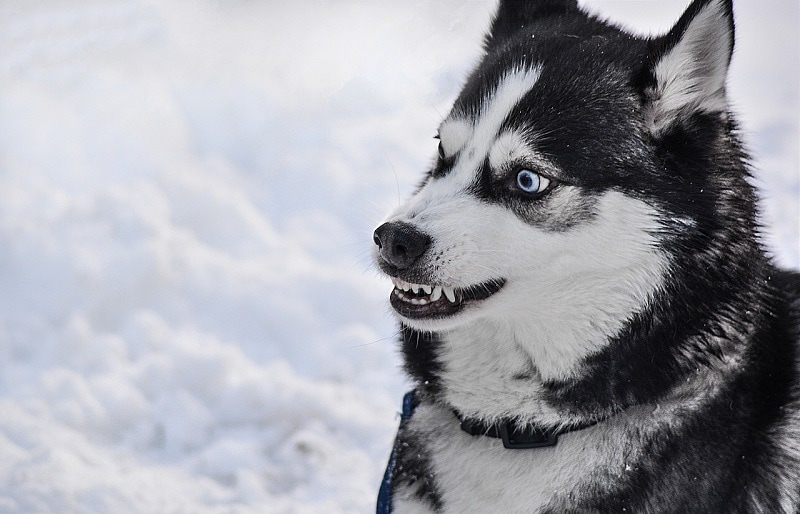
Movement often triggers aggression. The dog may seem fine until the cat begins to run, and then they will begin to chase. Furthermore, other aggression often triggers predatory aggression. The cat may swipe at the dog, which will cause the dog to react aggressively. Even if the dog starts out defending themselves, it often turns into predator aggression.
Dogs may also chase other things that move, such as bicycles, joggers, cars, and even people. Often, they won’t actually hurt these things when they become close to them. They may even display “packing” behaviors, which involve many dogs ganging together to go after a “prey.” Often, dogs that usually don’t display a high prey drive will if other dogs are involved.
The dog may act completely normal before they begin chasing their prey. They may even seem rather happy while they’re doing it. Many will continue wagging their tail. This is because many enjoy hunting. That’s how evolution ensured that they would hunt and catch their breakfast. It is a fun activity for them.
Dogs often take down their prey by accelerating toward them, biting at their heels, calves, and thighs. The point is to prevent the animal from running farther, at which point, the dog can kill the animal.
Is Predatory Aggression Really Aggression?
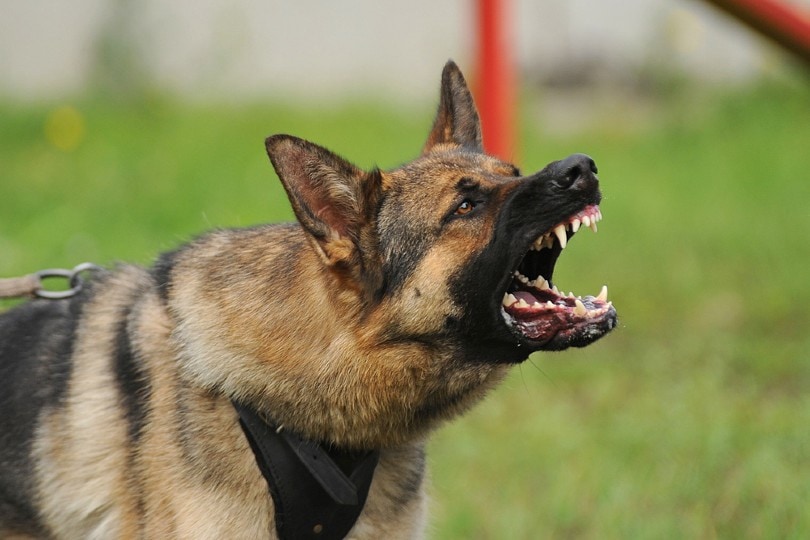
There is plenty of debate over whether predatory aggression is really aggression. The dog typically doesn’t experience any mood changes. The behavior isn’t driven by fear or dominance. Instead, the dog is just doing exactly what they were bred to do. Many will be perfectly content and happy during and after the episode.
For this reason, many people do not class predatory actions with other aggression. They are not treated the same. However, others argue that predatory aggression causes damage to another animal, which makes it aggressive behavior.
In the end, it doesn’t really matter whether you consider it an actual form of aggression or not.
Can You Treat Predatory Aggression?
Not really. Predatory aggression is innate in some breeds. A hunting dog that was bred for hunting can’t help themselves when a cat takes off running. They are simply doing what they were bred to do and what their ancestors have done for years.
Typically, dogs with predatory aggression will experience a state of high arousal, which makes them difficult to distract or command. For this reason, many commands do not work, which makes training ineffective. This behavior is simply natural and normal, though it can be very dangerous for small animals.
You can’t prevent a dog from expressing their natural instincts. However, you can be aware of those instincts and prevent putting your dogs in situations where they may do something destructive. If you have a dog with a high prey drive, you should not adopt a cat. If you already have a cat, do not adopt a dog with a high prey drive.
Avoiding Certain Situations
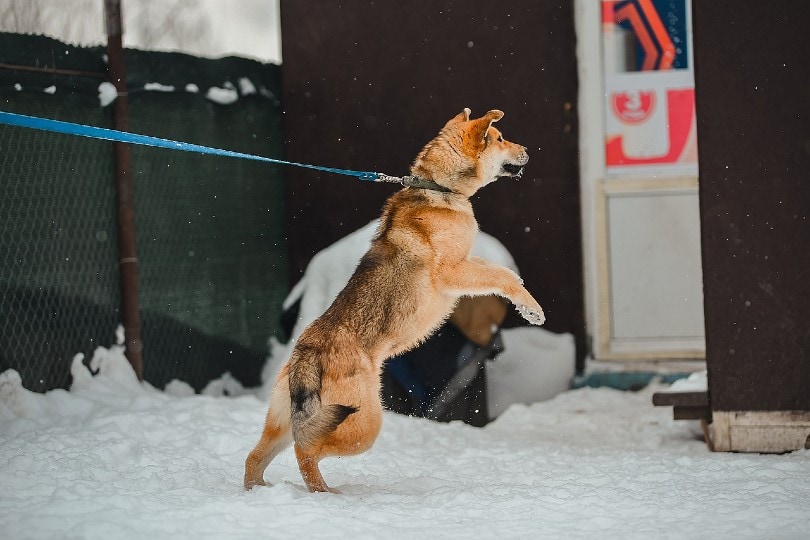
You should avoid situations that would allow the dog to have access to smaller animals. For instance, they shouldn’t be allowed to roam, as they will likely chase any small animal they see.
Dogs should be supervised whenever they are outside. You should be ready to restrain the dog while leash-walking, as they will often “forget” that they’re on a leash and attempt to chase anything that runs. Do not put your dog in a fenced-in area if a small animal could enter it, like your neighbor’s cat.
You can attempt reward-based training, using commands such as “leave it” to direct your dog away from a small animal. However, this is unlikely to prevent predatory behavior completely.
Socialization can be helpful in some canines. If they grow up with cats, they may not see them as prey animals. However, this typically only works for dogs with a low prey drive. Those with a high prey drive will often chase anything that moves, even if it is a cat that they have known for years.
Final Thoughts
Many dog breeds have a significant prey drive that will cause them to chase and even kill small animals. Some will even chase bicycles and other larger, moving items. Since this is an innate instinct, it is impossible to train dogs not to do it. Often, the best option is to prevent the dog’s access to animals that they may potentially see as prey. Some dogs even need to be watched around small children, as they may see them as prey animals when they are active and running around.
Dogs that exhibit predatory instincts aren’t being vicious or aggressive. Instead, they’re simply doing what they’re supposed to do. Many of them will remain happy before, during, and after the hunting event. As far as the dog is concerned, things are great!
We do not recommend adopting a cat or other small pet if you have a dog with a high prey drive. While socialization can sometimes be helpful, this is usually not reliable enough for dogs to live with smaller animals. You never know when they may become aggressive and harm the other pet.
For other forms of aggressive behavior in dogs, see our articles on social aggression, protective aggression, and redirected aggression.
Featured Image Credit: Nietosvaara, Pixabay

